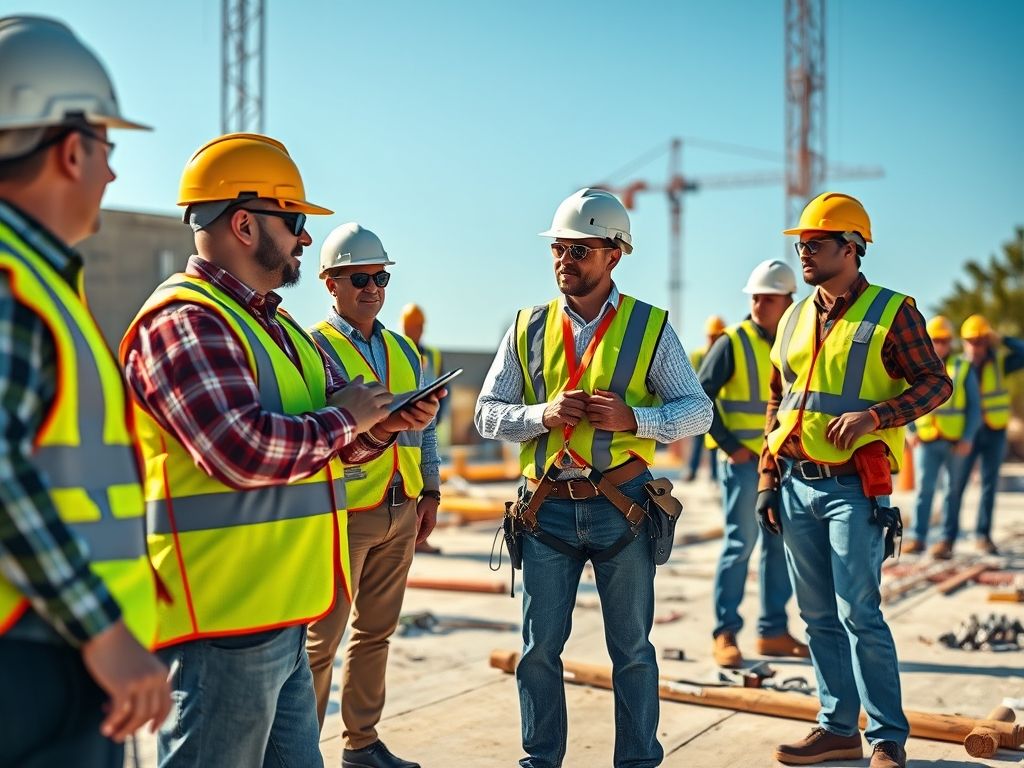What is Construction Safety?
Construction safety refers to the practices, regulations, and measures implemented to ensure the safety and health of workers on construction sites. It is a critical aspect of the construction industry, aiming to prevent accidents, injuries, and fatalities while promoting a safe working environment. Understanding construction safety is vital for homeowners, real-estate investors, and professional contractors in Massachusetts, where strict regulations and safety standards are enforced.
The Importance of Construction Safety
Construction sites can be hazardous due to heavy machinery, heights, and the presence of various materials. In Massachusetts, where construction activity is robust, safety practices are not just recommended; they are legally mandated. The importance of construction safety extends beyond regulatory compliance; it fosters a culture of care, protects workers, and can significantly reduce costs associated with accidents. Implementing effective safety measures can also enhance a company’s reputation, making it more appealing to clients and investors.
Key Components of Construction Safety
- Personal Protective Equipment (PPE): Essential gear such as helmets, gloves, goggles, and safety boots must be used to minimize injury risks.
- Safety Training: Regular training sessions help workers understand safety protocols and how to respond to emergencies.
- Site Safety Plans: A comprehensive safety plan tailored to each project outlines potential hazards and safety measures.
- Inspections and Audits: Routine safety inspections ensure compliance with safety standards and identify potential hazards.
Common Construction Safety Hazards
Understanding common hazards is crucial for implementing effective safety measures. Here are some prevalent risks in Massachusetts construction sites:
- Falls: One of the leading causes of injuries in construction. Proper scaffoldings and harnesses can mitigate this risk.
- Electrical Hazards: Live wires and faulty equipment can lead to severe injuries. Regular electrical inspections are essential.
- Machinery Accidents: Heavy machinery is a common sight on construction sites. Safety training on equipment usage is paramount to prevent accidents.
- Exposure to Hazardous Materials: Workers may come in contact with toxic substances. Proper handling and disposal protocols must be established.
How to Implement Construction Safety Practices
Implementing effective construction safety measures involves several practical steps:
- Conduct a Risk Assessment: Identify potential hazards specific to your project in Massachusetts.
- Develop a Safety Plan: Create a detailed safety plan that includes procedures for addressing identified risks.
- Provide Training: Ensure all workers receive comprehensive safety training tailored to their roles.
- Encourage Communication: Foster an environment where workers feel comfortable reporting hazards or safety concerns.
Applications of Construction Safety in Everyday Scenarios
Construction safety applies not only in large commercial projects but also in home renovation projects. Here are some practical applications:
- Home Renovation Projects: Homeowners should ensure that contractors follow safety protocols, especially when dealing with electrical or structural changes.
- DIY Projects: If you’re tackling a personal renovation, always wear PPE and follow safety guidelines, such as using ladders correctly and ensuring proper ventilation when using chemicals.
- Real-Estate Investments: Investors should assess a contractor’s safety record before hiring them to ensure compliance with safety standards, which can affect project timelines and budgets.
Related Concepts in Construction Safety
Several concepts are closely related to construction safety, enhancing the overall safety framework:
- Occupational Safety and Health Administration (OSHA): The federal agency that sets and enforces protective workplace safety and health standards. Understanding OSHA regulations is crucial for compliance.
- Site Safety Management: A comprehensive approach to managing safety on construction sites, which includes planning, execution, and monitoring of safety practices.
- Emergency Response Plans: Procedures that outline what actions to take in case of an accident or incident on a construction site.
Conclusion: The Ongoing Commitment to Construction Safety
Construction safety is an ongoing commitment that requires vigilance, training, and a proactive approach to risk management. For homeowners, real-estate investors, and professional contractors in Massachusetts, understanding and implementing effective safety practices is not only a legal obligation but also a moral one. By prioritizing safety, you protect your investment, your workers, and your community.
As you embark on your next construction project, remember that safety is not just a checklist; it’s a culture that you can cultivate within your team. Whether you are hiring professional contractors or taking on DIY renovations, always keep safety at the forefront of your decision-making process.







